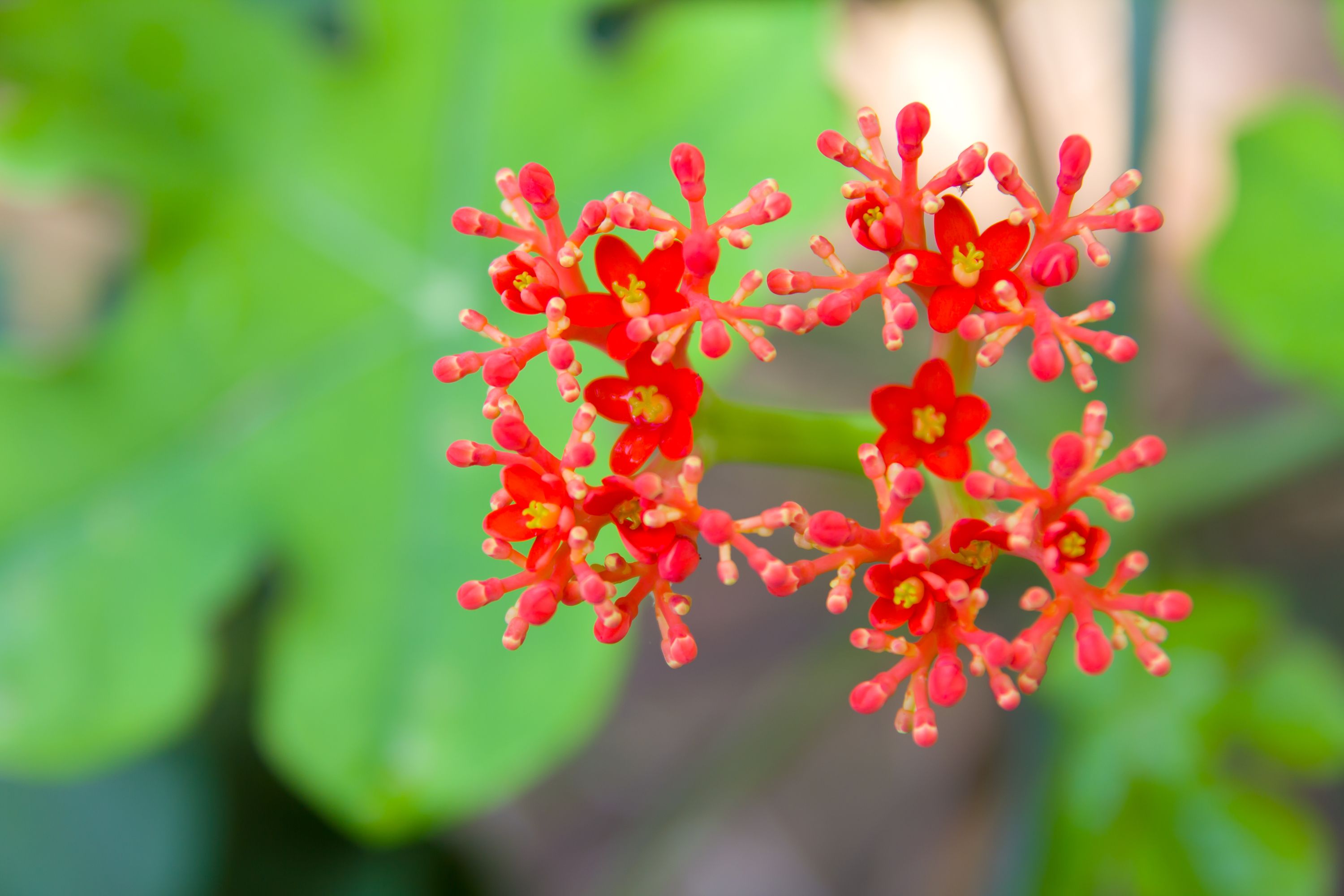Gout Plant
(Jatropha podagrica)

Description
Jatropha podagrica is a succulent plant in the family Euphorbiaceae. It is native to the tropical Americas but is grown as an ornamental plant in many parts of the world due to its unusual appearance. Common names include Gout Plant, Gout Stalk, Guatemalan Rhubarb, Coral Plant, Buddha Belly Plant, Purging-Nut, Physic Nut, Goutystalk Nettlespurge, Australian Bottle Plant, and Tartogo. J. podagrica is a caudiciform perennial herb growing up to 1 metre (3 feet) tall. The grey-green, knobby, swollen caudex has a bottle-like appearance, giving rise to some of the common names. Leaves are held on long fleshy yet stout petioles which emerge from the tip of the stem and radiate in all directions. Leaves are peltate and 3 or 5 lobed. Dense clusters of small, orange-red, flowers are held above the leaves on long slim peduncles. The clusters carry both male and female flowers and flowering continues for most of the year. Fruit are green capsules at first, becoming blackish-brown at maturity, when they explode and scatter their seeds up to 4 metres (13 feet) away. The swollen caudex, showy leaves, and colourful flowers make J. podagrica an attractive ornamental, and it is grown as an indoor plant in many parts of the world. Jatropha is a genus of flowering plants in the spurge family, Euphorbiaceae. The name is derived from the Greek words ἰατρός (iatros), meaning "physician", and τροφή (trophe), meaning "nutrition", hence the common name physic nut. Another common name is nettlespurge. It contains approximately 170 species of succulent plants, shrubs and trees (some are deciduous, like Jatropha curcas). Most of these are native to the Americas, with 66 species found in the Old World. Plants produce separate male and female flowers. As with many members of the family Euphorbiaceae, Jatropha contains compounds that are highly toxic. Jatropha species have traditionally been used in basketmaking, tanning and dye production. In the 2000s, one species, Jatropha curcas, generated interest as an oil crop for biodiesel production and also medicinal importance when used as lamp oil; native Mexicans in the Veracruz area developed by selective breeding a Jatropha curcas variant lacking the toxic compounds, yielding a better income when used as source for biodiesel, because of its edible byproduct. Toxicity may return if edible Jatropha is pollinated by toxic types.
Taxonomic tree:







